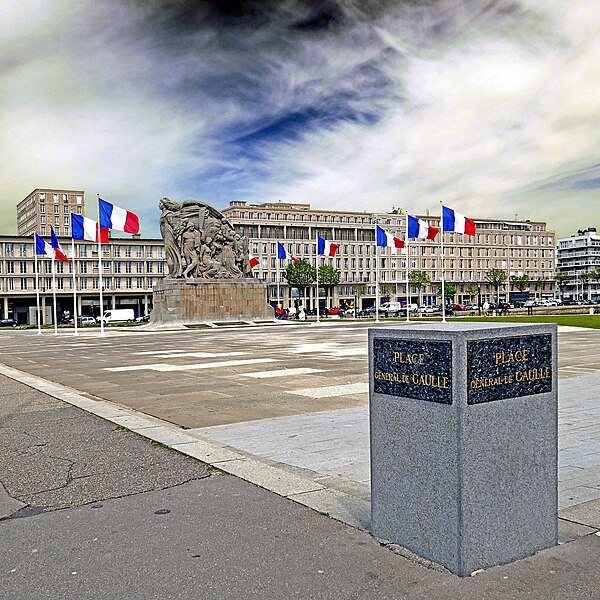The Paris–Le Havre railway is an important 228-kilometre long railway line, that connects Paris to the northwestern port city Le Havre via Rouen. Among the first railway lines in France, the section from Paris to Rouen opened on 9 May 1843, followed by the section from Rouen to Le Havre that opened on 22 March 1847.
The Barentin Viaduct, also known as the Pont Austreberthe, on the Paris–Le Havre railway
Opening ceremony of the Rouen and Le Havre Railway
Le Havre is a major port city in the Seine-Maritime department in the Normandy region of northern France. It is situated on the right bank of the estuary of the river Seine on the Channel southwest of the Pays de Caux, very close to the Prime Meridian. Le Havre is the most populous commune of Upper Normandy, although the total population of the greater Le Havre conurbation is smaller than that of Rouen. After Reims, it is also the second largest subprefecture in France. The name Le Havre means "the harbour" or "the port". Its inhabitants are known as Havrais or Havraises.
Image: Panorama of Le Havre, September 2019
Image: Le Havre (France), so called Fort Chabrol building
Image: Le Havre, France (45744371835)
Image: Church Saint Vincent in Le Havre (France)






